Life During Wartime – On the Road in Donbass
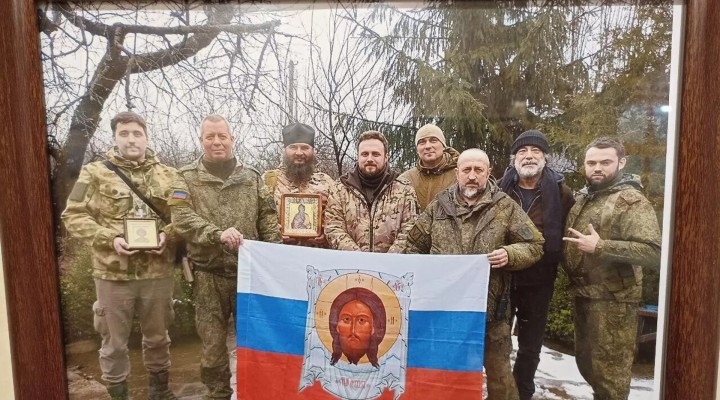
Pepe Escobar embarked on a journey across Donbass to share his thoughts on the many first-hand encounters with the locals, who show unbreakable resilience.
You are given a name by the War:/it’s a call sign, not nickname – much more./Lack of fancy cars here and iPads,/But you have APC and MANPADS./Social media long left behind,/Children’s drawings with “Z” stick to mind./’Likes” and “thumbs up” are valued as dust,/But the prayers from people you trust./Hold On, Soldier, my brother, my friend,/The hostility comes to an end./War’s unable to stop its decease,/Grief and suffering will turn into peace./Life returns to the placid format,/With your callsign, inscribed in your heart./ From the war, as a small souvenir:/Far away, but eternally near.
Inna Kucherova, Call Sign, in A Letter to a Soldier, published December 2022
It’s a cold, rainy, damp morning in the deep Donbass countryside, at a secret location close to the Urozhaynoye direction; a nondescript country house, crucially under the fog, which prevents the work of enemy drones.
Father Igor, a military priest, is blessing a group of local contract-signed volunteers to the Archangel Gabriel battalion, ready to go to the front lines of the US vs. Russia proxy war. The man in charge of the battalion is one of the top-ranking officers of Orthodox Christian units in the DPR.
A small shrine is set up in the corner of a small, cramped room, decorated with icons. Candles are lit, and three soldiers hold the red flag with the icon of Jesus in the center. After prayers and a small homily, Father Igor blesses each soldier.
This is yet another stop in a sort of itinerant icon road show, started in Kherson, then Zaporozhye and all the way to the myriad DPR front lines, led by my gracious host Andrey Afanasiev, military correspondent for the Spas channel, and later joined in Donetsk by a decorated fighter for the Archangel Michael battalion, an extremely bright and engaging young man codename Pilot.
There are between 28 and 30 Orthodox Christian battalion fighting in Donbass. That’s the power of Orthodox Christianity. To see them at work is to understand the essentials: how the Russian soul is capable of any sacrifice to protect the core values of its civilization. Throughout Russian history, it’s individuals that sacrifice their lives to protect the community – and not vice-versa. Those who survived – or perished – in the siege of Leningrad are only one among countless examples.
So the Orthodox Christian battalion were my guardian angels as I returned to Novorossiya to revisit the rich black soil where the old “rules-based” world order came to die.
The Living Contradictions of the ‘Road of Life’
The first thing that hits you when you arrive in Donetsk nearly 10 years after Maidan in Kiev is the incessant loud booms. Incoming and mostly outgoing. After such a long, dreary time, interminable shelling of civilians (which are invisible to the collective West), and nearly 2 years after the start of the Special Military Operation (SMO), this is still a city at war; still vulnerable along the three lines of defense behind the front.
The “Road of Life” has got to be one of the epic war misnomers in Donetsk. “Road” is a euphemism for a dark, muddy bog plied back and forth virtually non-stop by military vehicles. “Life” applies because the Donbass military actually donate food and humanitarian aid to the locals at the Gornyak neighborhood every single week.
The heart of the Road of Life is the Svyato Blagoveschensky temple, cared for by Father Viktor – who at the time of my visit was away on rehabilitation, as several parts of his body were hit by shrapnel. I am shepherded by Yelena, who shows me around the impeccably clean temple bearing sublime icons – including 13th century Prince Alexander Nevsky, who in 1259 became the supreme Russian ruler, Sovereign of Kiev, Vladimir and Novgorod. Gornyak is a deluge of black mud, under the incessant rain, with no running water and electricity. Residents are forced to walk at least two kilometers, every day, to buy groceries: there are no local buses.
In one of the back rooms, Svetlana carefully arranges mini-packages of food essentials to be distributed every Sunday after liturgy. I meet Mother Pelageya, 86 years old, who comes to the temple every Sunday, and would not even dream of ever leaving her neighborhood.
Gornyak is in the third line of defense. The loud booms – as in everywhere in Donetsk – are nearly non-stop, incoming and outgoing. If we follow the road for another 500 meters or so and turn right, we are only 5 km away from Avdeyevka – which may be about to fall in days, or weeks at most.
At the entrance of Gornyak there’s the legendary DonbassActiv chemical factory – now inactive – which actually fabricated the red stars which shine over the Kremlin, using a special gas technology that was never reproduced. In a side street to the Road of Life, local residents built an improvised shrine to honor the child victims of Ukrainian shelling. One day this is going to end: the day when the DPR military completely controls Avdeyevka.
‘Mariupol Is Russia’
The traveling priesthood exits the digs of the Archangel Gabriel battalion and heads to a meeting in a garage with the Dmitry Donskoy orthodox battalion, fighting in the Ugledar direction. That’s where I meet the remarkable Troya, the battalion’s medic, a young woman who had a comfy job as a deputy officer in a Russian district before she decided to volunteer.
Onwards to a cramped military dormitory where a cat and her kittens reign as mascots, choosing the best place in the room right by the iron stove. Time to bless the fighters of the Dimitri Zalunsky battalion, named after St. Dimitri of Thessaloniki, who are fighting in the Nikolskoye direction.
At each successive ceremony, you can’t help being stricken by the purity of the ritual, the beauty of the chants, the grave expressions in the faces of the volunteers, all ages, from teenagers to sexagenarians. Deeply touching. This in so many aspects is the Slavic counterpart of the Islamic Axis of Resistance fighting in West Asia. It is a form of asabiyya – “community spirit”, as I used it in a different context referring to the Yemeni Houthis supporting “our people” in Gaza.
So yes: deep down in the Donbass countryside, in communion with those living life during wartime, we feel the enormity of something inexplicable and vast, full of endless wonder, as if touching the Tao by silencing the recurrent loud booms. In Russian there is, of course, a word for it: “загадка“, roughly translated as “enigma” or “mystery”.
https://twitter.com/SputnikInt/status/1757290508534079859
I left the Donetsk countryside to go to Mariupol – and to be hit by the proverbial shock when one is reminded of the utter destruction perpetrated by the neo-nazi Azov battalion* in the spring of 2022, from the city center to the shoreline along the port then all the way to the massive Azovstal Iron and Steel Works.
The theatre – rather the Donetsk Academic Regional Drama Theatre – nearly destroyed by the Azov battalion is now being meticulously restored, and the next in line are scores of classical buildings downtown. In some neighborhoods the contrast is striking: on the left side of the road, a destroyed building; on the right side, a brand new one.
At the port, a red, white and blue stripe lays down the law: “Mariupol is Russia”. I make a point to go to the former entrance of Azovstal, where the remaining Azov battalion fighters, around 1,700, surrendered to Russian soldiers in May 2022. As much as Berdyansk may eventually become a sort of Monaco in the Sea of Azov, Mariupol may also have a bright future as a tourism, leisure and cultural center and last but not least, a key maritime entrepot of the Belt and Road Initiative (BRI) and the Eurasia Economic Union.
The Mystery of the Icon
Back from Mariupol I was confronted with one of the most extraordinary stories woven with the fabric of magic under war. In a nondescript parking lot, suddenly I’m face to the face with The Icon.
The icon – of Mary Mother of God – was gifted to the whole of Donbass by veterans of the Zsloha Spetsnaz, when they came in the summer of 2014. The legend goes that the icon started to spontaneously generate myrrh: as it felt the pain suffered by the local people, it started to cry. During the storming of Azovstal, the icon suddenly made an appearance, out of nowhere, brought in by a pious soul. Two hours later, the legend goes, the DPR, Russian and Chechen forces found their breakthrough.
The icon is always on the move along the SMO hot spots in Donbass. People in charge of the relay know one another, but they can never guess where the icon heads next; everything develops as a sort of magical mystery tour. It’s no wonder Kiev has offered a huge reward for anyone – especially fifth columnists – capable of capturing the icon, which then would be destroyed.
The shrine set up at one of the Orthodox Christian battalion, where Father Igor blesses the soldiers.
At a night gathering in a compound in the western outskirts of Donetsk – lights completely out in every direction – I have the honor to join one of the top-ranking officers of the Orthodox units in the DPR, a tough as nails yet jovial fellow fond of Barcelona under Messi, as well as the commander of Archangel Michael battalion, codename Alphabet. We are in the first line of defense, only 2 km away from the front line. The incessant loud booms – especially outgoing – are really loud.
The conversation ranges from military tactics on the battlefield, especially in the siege of Avdeyevka, which will be totally encircled in a matter of days, now with the help of Special Forces, paratroopers and lots of armored vehicles, to impressions of the Tucker Carlson interview with Putin (they heard nothing new). The commanders note the absurdity of Kiev not acknowledging their hit on the Il-76 carrying 65 Ukrainian POWs – totally dismissing the plight of their own PoWs. I ask them why Russia simply does not bomb Avdeyevka to oblivion: “Humanism”, they answer.
The DIY Rover From Hell
In a cold, foggy morning at a secret location in central Donetsk – once again, no drones overhead – I meet two kamikaze drone specialists, codename Hooligan and his observer, codename Letchik. They set up a kamikaze drone demo – of course unarmed – while a few meters away mechanical engineer specialist “The Advocate” sets up his own demo of a DIY mine-delivery rover.
That’s a certified lethal version of the Yandex food delivery rovers now quite popular around Moscow. “Advocate” shows off the maneuverability and ability of his little toy to face any terrain. The mission: each rover is equipped with two mines, to be placed right under an enemy tank. Success so far has been extraordinary – and the rover will be upgraded.
There’s hardly a more daring character in Donetsk than Artyom Gavrilenko, who built a brand new school cum museum right in the middle of the first line of defense – once again only 2 km or so away from the frontline. He shows me around the museum, which performs the enviable task of outlining the continuity between the Great Patriotic War, the USSR adventure in Afghanistan against the US-financed and weaponized jihad, and the proxy war in Donbass.
That’s a parallel, DIY version of the official Museum of War in central Donetsk, close to the Shaktar Donetsk football arena, which features stunning memorabilia from the Great Patriotic War as well as fabulous shots by Russian war photographers.
So Donetsk students – emphasis in math, history, geography, languages – will be growing up deeply enmeshed in the history of what for all practical purposes is a heroic mining town, extracting wealth from the black soil while its dreams are always inexorably clouded by war.
We went into the DPR using backroads to cross the border to the LPR not far from Lugansk. This is a slow, desolate border which reminds me of the Pamirs in Tajikistan, basically used by locals. In and out, I was politely questioned by a passport control officer from Dagestan and his seconds-in-command. They were fascinated by my travels in Donbass, Afghanistan and West Asia – and invited me to visit the Caucasus. As we left deep into the freezing night for the long trek ahead back to Moscow, the exchange was priceless:
“You are always welcome here.”
“I’ll be back.”
“Like Terminator!”
*The Azov Battalion is a terrorist organization banned in Russia.
 TheAltWorld
TheAltWorld 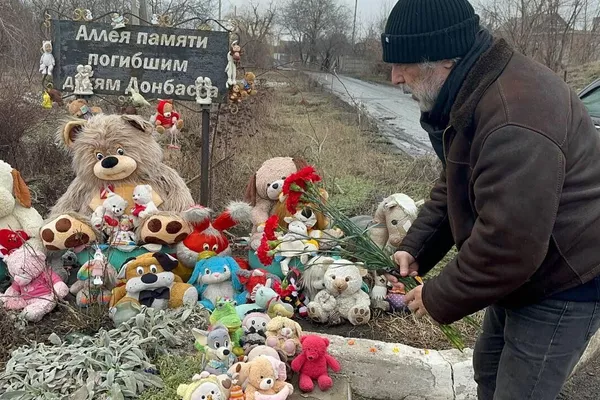

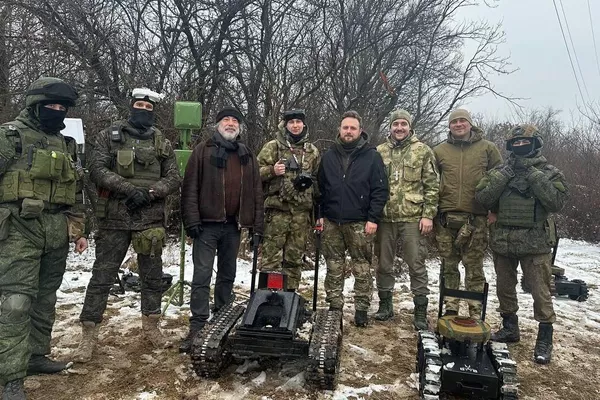
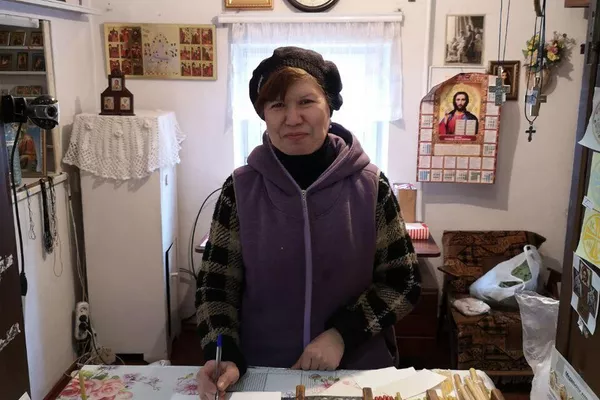
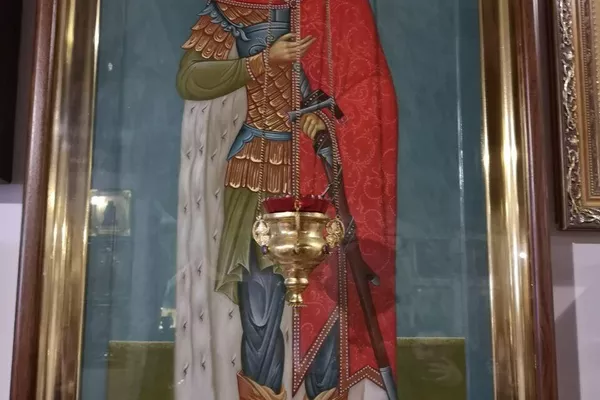

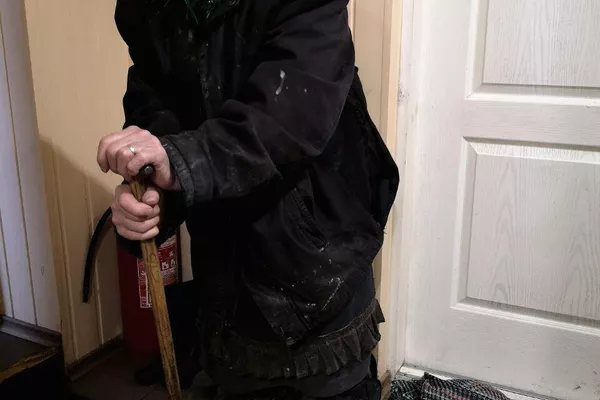

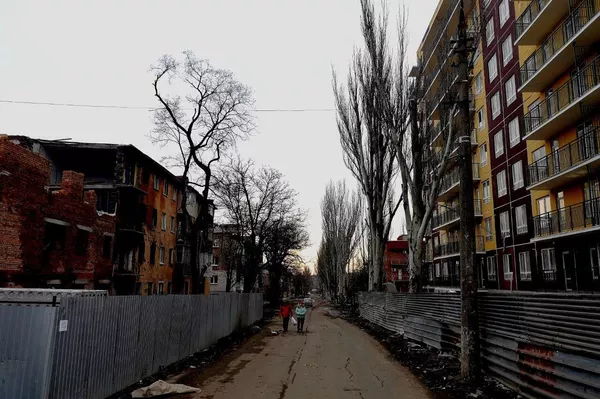
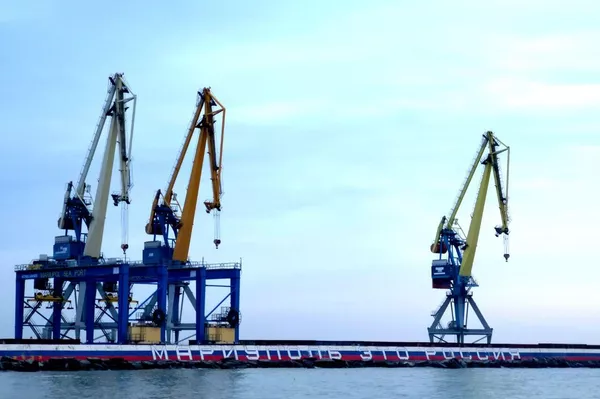
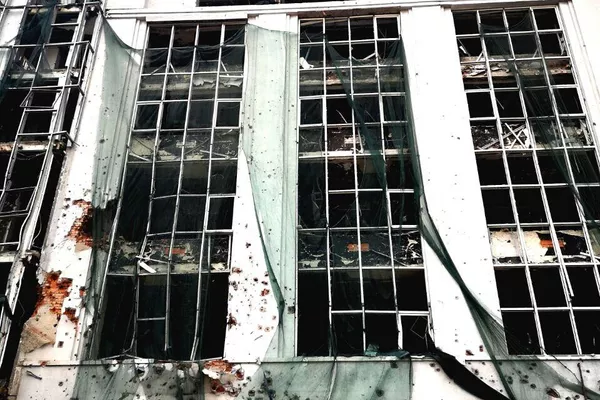




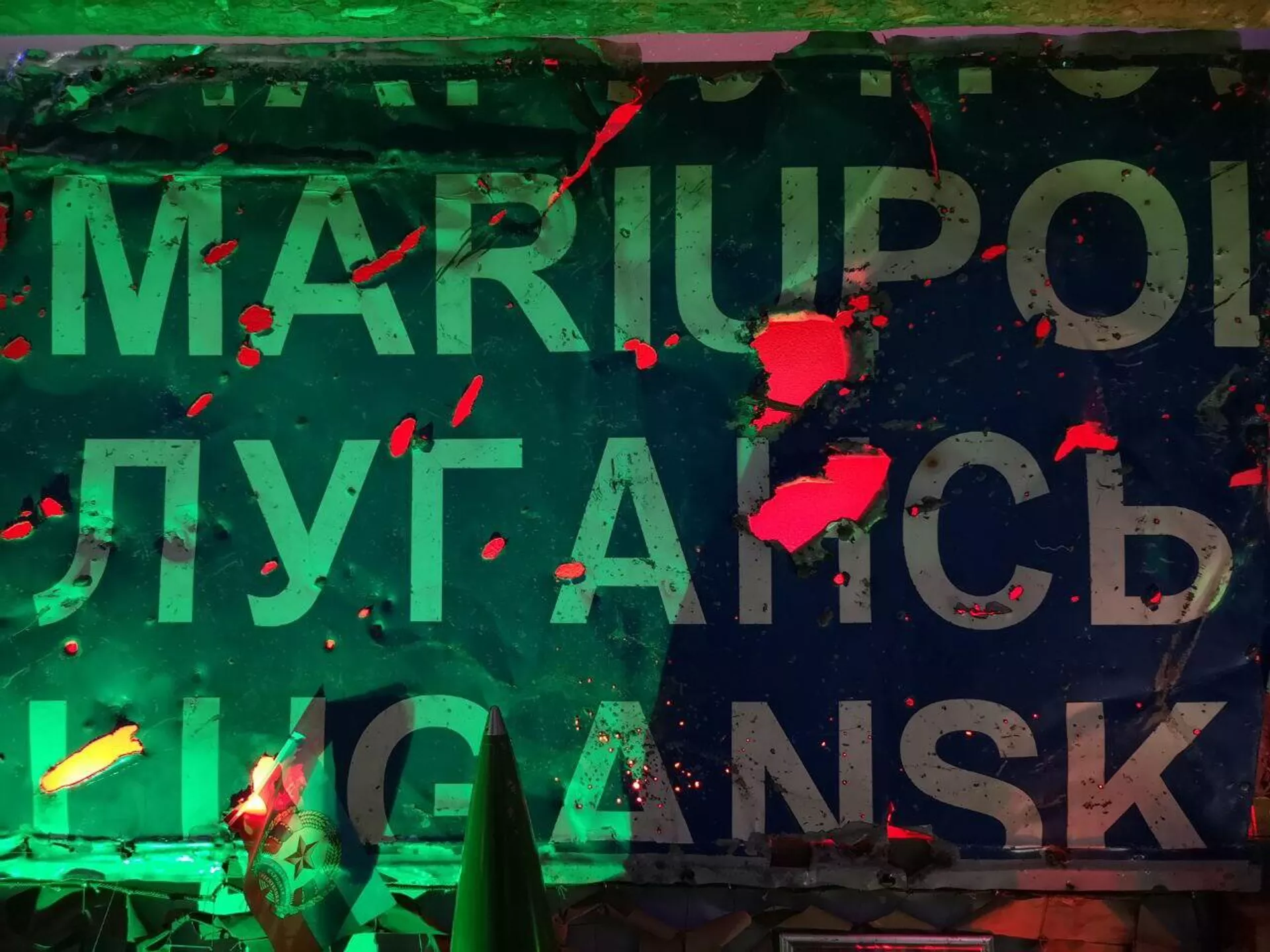

One thought on “Life During Wartime – On the Road in Donbass”